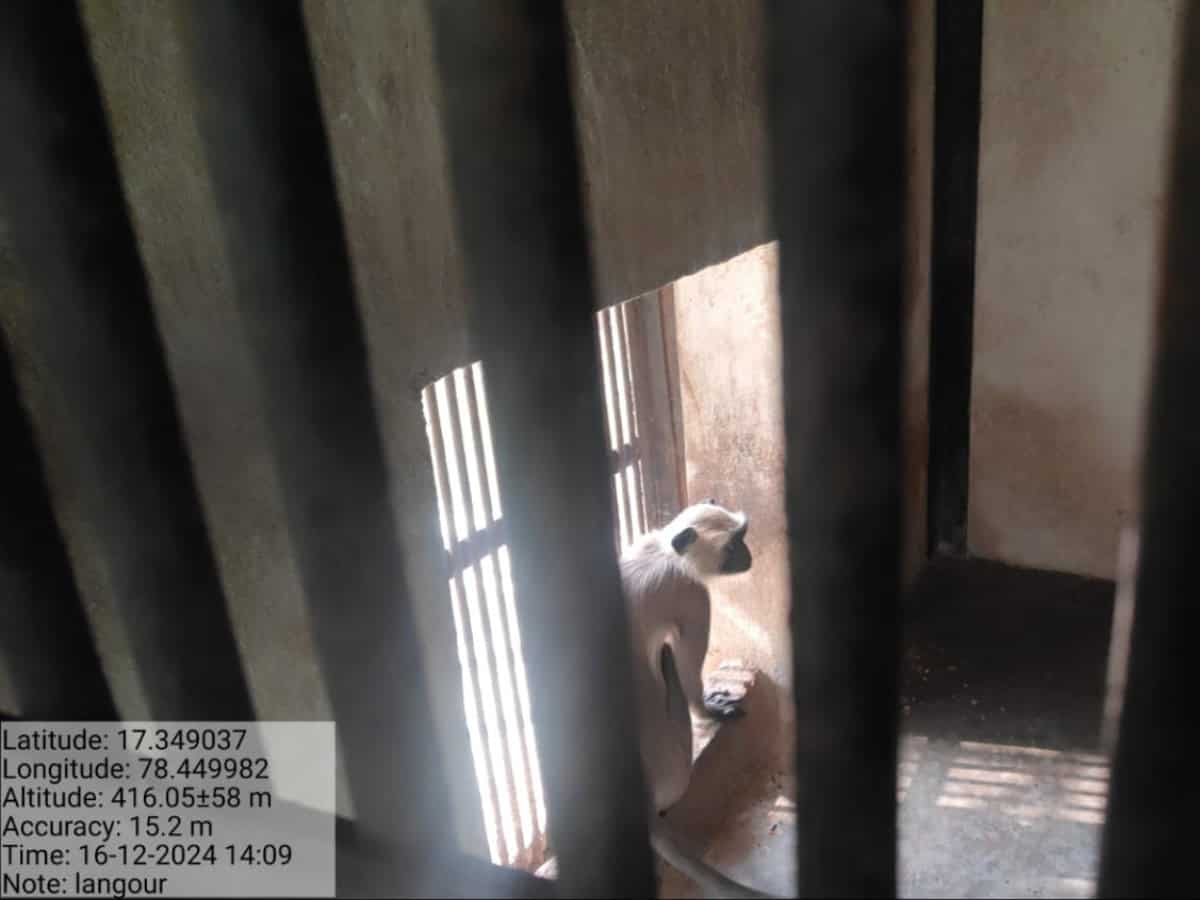
Hyderabad: A six-year-old female langur who had been part of a small circus in Dammaiguda was rescued and transferred to the Zoo Park in Hyderabad following a complaint.
The circus run by Buchi Babu from Dammaiguda had used the langur for public entertainment training it to walk on a rope. Babu, who moved to Dammaiguda from Ibrahim Patnam a decade ago had kept the langur to earn money.
Based on the complaint, forest range officials launched an investigation which resulted in the langur’s rescue. A case was filed under the Wildlife Protection Act, of 1972 which classifies langurs as a protected species under Schedule II, making their illegal capture or exhibition a punishable offence.
According to reports, Babu had been exhibiting the langur for over four years. The animal had been treated like a pet, eating and living alongside the family, with a close bond formed as it only ate when family members were present.
The langur was moved to Zoo Park in Hyderabad for rehabilitation where it is reported to be healthy and adjusting to its new environment.
About Zoo Park in Hyderabad
The Nehru Zoological Park, located near Mir Alam Tank in Bahadurpura, was inaugurated on October 6, 1963, after the relocation of the erstwhile zoo enclosures from the Public Gardens. The construction of the Nehru Zoo Park in Hyderabad took four years after its construction began on October 26, 1959.
The Nehru Zoo Park currently hosts 2240 animals in total including 664 mammals of 55 species, 1227 birds of 97 species, 341 reptiles of 38 species and 8 amphibians of 2 species. The natural landscape of the Zoo attracts several migratory as well as resident birds.
The Zoo also allows the adoption of animals for a specified time for a fee that helps in the maintenance of the enclosure and the zoo’s work with wildlife conservation organizations worldwide.



